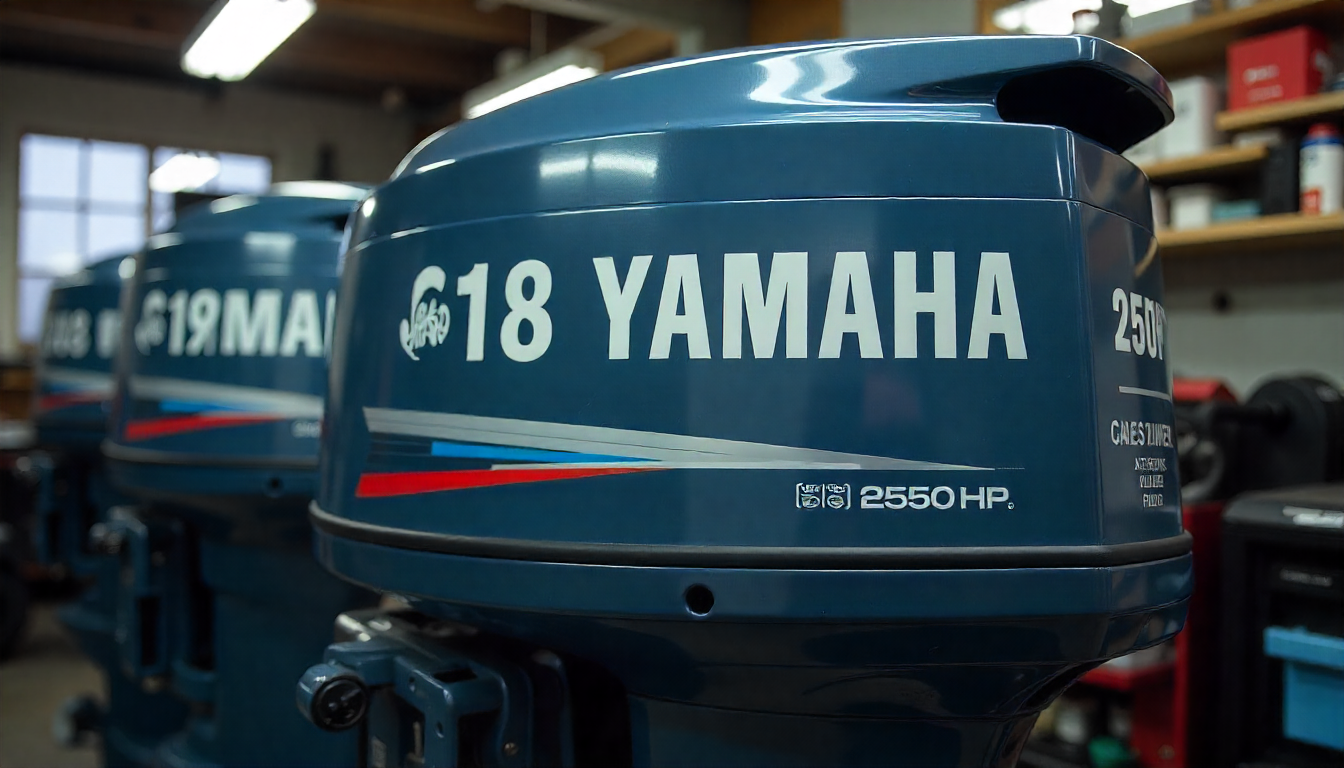Introduction to Outboard Motor Parts
For anyone passionate about boating, knowing outboard motor parts is not just a bonus—it’s a necessity. These components ensure propulsion, steering, and safety on the water. The outboard motor is the driving force for countless boats, and every part, from the smallest bolt to the outboard lower unit, plays a role in keeping the vessel operational. By understanding these parts, owners can perform better maintenance and prevent unexpected breakdowns.
Main Sections of an Outboard Motor
An outboard motor can be divided into three major sections: the powerhead, the midsection, and the lower unit. Each section contains parts that work together to convert fuel into thrust.
Powerhead – Engine Block and Key Components
At the top of the motor sits the powerhead, which houses the engine block. This block contains cylinders, pistons, and the crankshaft—vital for creating mechanical energy from combustion. Larger outboards may have more cylinders for increased smoothness and power delivery.
The cooling system here draws water from outside, circulates it through the block, and then expels it. Spark plugs ignite the air-fuel mixture, while the fuel system ensures the right amount of fuel reaches the cylinders. Without proper care, the engine block can crack or warp, leading to expensive repairs.
Midsection – Linking and Supporting Systems
Beneath the powerhead is the midsection, which connects the engine to the lower unit. It contains the tilt and trim system for adjusting the motor’s angle, as well as the steering assembly. This section also encloses the drive shaft, protecting it from damage. Because it often houses moving parts, regular lubrication is important.
The Lower Unit – Underwater Power Transfer
Perhaps the most critical part of an outboard motor, the lower unit transmits power from the vertical drive shaft to the propeller’s horizontal rotation. Inside, the forward gear, reverse gear, and pinion gear handle directional changes. The lower unit houses seals that keep gear oil inside and water out, ensuring smooth operation.
A skeg located below the propeller protects it from debris and stabilizes movement. In addition, the water pump here circulates cooling water to the engine block. Without this pump, overheating can occur quickly.
Maintaining the Lower Unit
Lower unit maintenance is essential. Changing the lower unit oil at least once per season helps prevent gear wear. It’s also wise to inspect the drain plug, seals, and gaskets for damage. Flushing the cooling passages removes debris that could block water flow.
If the outboard lower unit makes unusual noise or leaks oil, it’s often a sign of internal wear or seal failure. Addressing these issues early can save costly repairs.
Outboard Lower Unit – In-Depth Look
The outboard lower unit contains critical parts that allow the boat to move forward and reverse. When the engine is in forward, the forward gear engages the prop shaft to push the boat forward. Switching to reverse gear changes rotation, while neutral disengages the gears.
This unit houses the water pump, prop shaft, gears, and seals. The design also protects the propeller from underwater hazards. Since the lower unit operates underwater, corrosion resistance is key.
Other Essential Outboard Motor Parts
Propeller
The propeller converts rotational energy into thrust. Different designs affect speed, fuel economy, and handling. A damaged propeller can severely affect performance.
Cooling System
This system prevents overheating by circulating water through the engine block. Any blockage can quickly lead to damage, so flushing after use—especially in saltwater—is important.
Fuel System
From the tank to the injectors, this system ensures a steady supply of clean fuel. Contaminated fuel can damage the carburetor or injectors, leading to poor performance.
Boosting Performance with Proper Care
Proper maintenance of the outboard motor parts significantly impacts performance. A well-kept lower unit ensures smooth shifting and optimal propeller speed. Clean engine block passages help prevent overheating, and a correctly adjusted tilt and trim system improves fuel efficiency.
For larger outboards, electronic control systems offer more precise throttle response, while regular oil changes keep moving parts in top condition.
Maintenance Checklist
- Inspect the lower unit for cracks, corrosion, or oil leaks.
- Replace gear oil as recommended.
- Check the engine block for overheating signs.
- Flush the cooling system regularly.
- Grease steering and tilt mechanisms.
With these steps, different components will work together smoothly, reducing the risk of failure.
Troubleshooting Common Issues
If the outboard motor fails to start, check spark plugs, fuel delivery, and electrical connections first. When the boat moves sluggishly, examine the lower unit for worn gears or a damaged propeller.
A cracked engine block, often from freezing or overheating, is a serious problem that usually requires professional service. If the engine is in forward but the boat does not move, the issue may lie in the prop shaft or gears inside the lower unit.
Sonuç
Understanding outboard motor parts is vital for safe and efficient boating. Every part, from the engine block to the outboard lower unit, has a role in keeping the boat moving. Regular inspections, gear oil changes, and attention to the cooling system help extend the life of the motor.
By keeping all parts well-maintained, boaters can enjoy more time on the water and less time in the repair shop. A clear knowledge of how these components work together will give you the confidence to operate your vessel safely and efficiently.

 Outboard Motor Parts Explained – Complete Guide to Components and Functions">
Outboard Motor Parts Explained – Complete Guide to Components and Functions">
